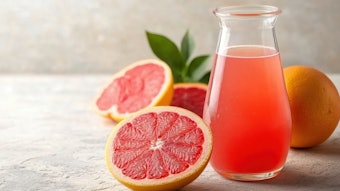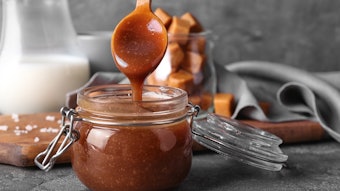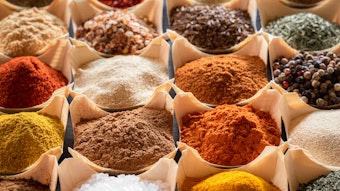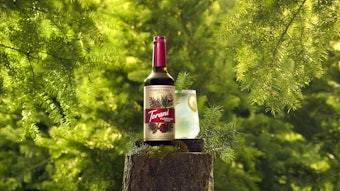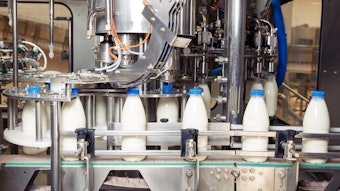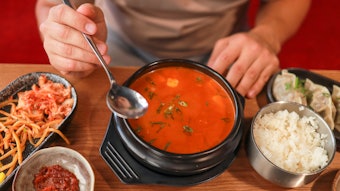
Would you believe me if I told you the subject “Citrus Oils, Availability and Markets” is a topic worthy of being addressed every year? I think you probably would. How about if I told you that a meaningful review was a topic that warranted quarterly consideration? For many companies, purchasing citrus oils is sufficiently important such that, quarterly reviews would be considered prudent. What about monthly? My guess is that a buyer, with a long list of products to secure, would find a monthly review to be either difficult or unworkable.
After 35 years of observing and studying the markets for orange, lemon, lime and grapefruit, I think it is necessary to keep daily track of the many factors that influence the markets for citrus. This is true because many of the most relevant factors that cause prices to move are unpredictable.
In any company, the individual or team of individuals responsible for making purchasing decisions regarding citrus oils needs to be endowed with the wisdom of Solomon. Perhaps Benjamin Franklin said it best, “Some people are weather-wise and most are otherwise.” Any purchaser of citrus oils should consider keeping a copy of this quotation on their desk. A weather-wise individual is one who is capable of navigating a situation when faced with continuously changing circumstances. If that does not best describe the skill necessary for managing purchasing decisions for orange, lemon, lime and, heaven help us, grapefruit, I do not know what does.
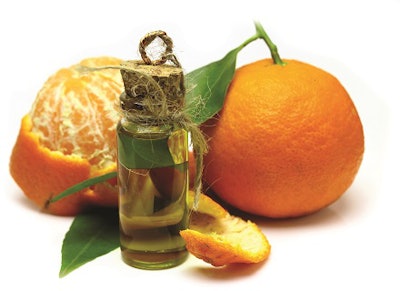
Compare the challenges of the citrus oil buyer to the challenges inherent in purchasing common commodity chemicals. With most chemicals, one researches and collects accurate information regarding supply and demand, including the availability of feedstock and production capacity. With aroma chemicals, some additional attention should be paid to the actual number of producers and their location. If you have accurate information about these factors, meaningful decisions can be made and inventory levels can be established and maintained.
When buying citrus oils, those same factors are also important. Incorrect decisions, however, are possible when total reliance on too few facts takes the place of sound judgment. Let’s take a look at what happened in 2018 and then come back to how a company might design a system for buying citrus oils that would best mitigate risk. Most of the articles on citrus oils begin with orange. In the spirit of dealing with the unpredictable, we will begin with lemon.
Lemon
Like all citrus fruits, lemon is good for you. Not only that, it makes other foods taste better. For this reason, lemon juice is both a food and a food ingredient. The vitamin C in lemon juice is also an antiscorbutic. For you non-sailors, that means the consumption of lemon juice can prevent scurvy. Of course, scurvy is not as prevalent today, but it was a medical problem for sailors in the Age of Exploration. Lemon juice’s ability to cure scurvy is one reason why there are so many plantations of lemon trees dotting the coasts of the most frequented sea lanes, including West Africa, the Madeira Islands, South Africa, the West Indies, and the coasts of Brazil, Chile, Peru, Mexico, and throughout the South Pacific. Basically, anywhere the climate would support the growth of citrus fruits, sailors planted seeds as a reliable source of good tasting food and medicine.
The sheer size of the lemon crop in Argentina and the corresponding production in any given year is the most important factor in predicting the global price for lemon.
Lemon grows best in a Mediterranean climate. Mediterranean climates occur in geographical areas similar to Sicily, Spain, Israel and Southern California. Where the weather is characterized by hot days, cool nights and is generally dry. There are similar microclimates like the one in the Province of Tucuman Argentina, which also enjoys a Mediterranean climate.
In the flavor and fragrance industries, we use lemon oil for its taste and aroma. The global distribution of lemon fruit includes eight countries with meaningful lemon acreage. In order of importance, they are Argentina, Spain, USA, Turkey, Italy, China, South Africa and Mexico. Lemon oil is extracted as a by-product when lemon fruit is processed for juice. However, not all countries that grow lemons, process them. For instance, most lemons in Turkey are sold as fresh fruit. This is because Turkey is perfectly positioned to export to both Western and Eastern Europe and Russia. Though Argentina grows approximately 24% of the world’s lemons, it processes approximately 55%. Given the fact that a large percentage of lemon oil is contracted throughout the world by major consumer companies, Argentina—because of its large production—typically supplies 50% of the available lemon oil that is not already sold by virtue of long-term contracts. What this means is, if your company uses lemon oil, from a risk management perspective, it certainly makes sense to consider including lemon oil Argentina in your purchases. In addition to Argentina, there are significant volumes of lemon oil processed in the US, Spain, Italy, South Africa and Mexico. That said, it is important to point out that the taste of lemon oils varies by geographic origin, variety, and even as a result of the type of extraction equipment. At Citrus and Allied Essences, we recently did a taste test of lemon oil of a particular variety produced at the same time, using two different extraction methods, and we could definitely taste a difference.
When there is a large lemon crop in Argentina, there is a good chance that lemon oil can be purchased at a favorable price. Unfortunately, in Argentina, a number of inputs, such as fertilizer, are priced in US dollars. For that reason, the value of the Argentine peso is a critical factor affecting the cost of Argentine oil. If the peso is weak, costs (in pesos) are high for those raw materials, which must be purchased in US dollars. This can result in high prices (in US dollars) for lemon oil, even if there is a large crop. If the weather in other producing regions like Spain or Italy is poor, resulting in lower production, processors in Argentina often have enough pricing power to charge high prices since, in the end, one out of every two drums is sourced there.
The sheer size of the lemon crop in Argentina and the corresponding production in any given year is the most important factor in predicting the global price for lemon. If Argentina has a good year, there is a fair chance that prices will either remain steady or decline throughout the world. If Spain and Italy experience excellent years in the same year that Argentina is also having a bumper crop, this often foretells lower prices. If the majority of countries outside of Argentina have bad years, there is a good chance that prices will increase. The worst combination of circumstances occurs when Argentina, Spain, Italy and the US simultaneously experience bad crops. This does not happen often, but it does seem to occur once every ten years. When it does, having inventory or contracts in place are the best defenses to offset higher prices.
In 2018, Argentina’s production was down from 2017. However, 2017 was a big year, which made it possible for Argentinian producers to catch up on deliveries for outstanding contracts. In 2018, the crop in the US was even with 2017, Spain experienced single-digit increased production while Italy was down somewhat. On balance, the propensity of information would seem to support a conclusion that prices would increase. In fact, prices have fallen. Some of the decrease may be due to a small reduction in demand by manufacturers of carbonated soft drinks and some of the price decline is probably due to the currency situation in Argentina.
One of the important factors that influences pricing are inventory levels. Over the past 20 years, most companies have prided themselves on keeping inventories low. This is done for obvious reasons. When it comes to making decisions regarding the optimum inventory levels of natural products, there are a few factors that are worth understanding. First, “just in time,” the popular inventory management technique that necessitates that raw material deliveries occur at the moment they are needed for production, is often late. Another factor to consider is that the practice of buying extra product when prices are low keeps prices down. This, however, increases inventory levels. If every company keeps its inventory of natural products as low as possible, minor reductions in supply can result in major increases in price. Basically, if you do not like the price of a product, you are in a stronger position if your available inventory affords you the luxury of not needing to purchase.
Fortunately, with the possible exception of grapefruit, the demand for citrus fruits is growing. Worldwide, consumers want to eat more citrus fruits. For that reason, farmers are planting new groves. Since not all citrus fruits are consumed as fresh, the increased planting is good news for the citrus oil market. Take Spain for example. From the early 1970s until 2017, lemon production has increased from 100,000 tons to 1,100,000 tons. In the European Union countries, lemon consumption has increased by over 30% in just over ten years. Another area of growing demand in Western countries is the demand by consumers for organic fruit. This is a high-value, high-demand segment that supports both common varieties as well as novel ones.
The availability of grapefruit oil in Florida has been reduced by over 80% over 15 years.
Another consideration is the overall health of trees in a specific region. Whereas disease has dramatically affected orange, lemons are in better shape. This is due to the location in which lemons are grown, the climate and different grove-management techniques employed by growers who had the benefit of seeing what happened with orange. Unfortunately for growers, lemons flourish in the same places that many people love to live. Land that is suitable for lemon groves is much more valuable when used for building homes.
Nonetheless, over the long run, the availability for lemon juice and lemon oil should be secure. In the short term, the facts do not support either a go-long or a go-short strategy. As with investments, a hedging strategy of buying some of what you need makes a great deal of sense.
Grapefruit
Grapefruit is expensive and in short supply. This has been the scenario for at least a decade. Higher prices have led to a marked reduction in demand. While it is not a surprise that most of the new formulation activity is focused on grapefruit replacements, every so often a new consumer product flavored with grapefruit oil is introduced. That being said, new product introductions have not had a meaningful impact on the demand for grapefruit oil and the low demand for fresh fruit has resulted in the grapefruit groves being replaced by orange groves as natural attrition dictates that new groves be planted.
Related: Beyond the Peel: Analysis of Pink Grapefruit Juice
The bitter-sweet taste of grapefruit is not universally appealing. In the past, older adults made up the primary demographic of grapefruit consumers. Over a decade ago, there were well-publicized studies suggesting that grapefruits interfered with the absorption of cholesterol-reducing medications. This meant the most loyal consumer segment was being told by the medical community to avoid the fruit. With a reduction in demand, there was no reason for growers to plant additional trees. Let’s look at Florida as an example, with a natural attrition rate of approximately 5% per year, caused by aging trees, the major problem of citrus greening disease, and the effects of bad weather over time, the availability of grapefruit oil in Florida, has been reduced by over 80% over 15 years. From a price perspective, should the demand for grapefruit oil decrease to the point where processors are looking for orders for their meager inventory, prices will decline. If the current prices are supported at current levels, they will remain at current levels. If new consumer products, flavored with grapefruit oil are big winners, prices could increase.
One of the unique attributes for the global market for grapefruit is that the majority of the best quality fruit is processed in the United States. While production exists in other parts of the world, like Mexico, oil produced there has almost no nootkatone, one of the most important characterizing components of grapefruit. Grapefruit oil with no, or very low nootkatone, is still grapefruit oil. It smells like grapefruit. But, it does not impart much flavor.
While mandarin oils in single and folded forms can be used to make mandarin flavors, the oils are often used in formulations to modify orange flavors.
Mandarin
Along with the progenitor citrus varieties of citrons and pomelos, mandarins are generally considered to be wild species. As such, there are many varieties of mandarin that are included in the overall species. These include mandarins such as Satsuma and Mediterranean mandarin as well as popular fruits like clementine and tangerine. All of these fruits are thin-skinned and vary widely in flavor profile. Some of the varieties such as tangerine and clementine are sweet, delicious, and very easy to peel making a perfect snack. In contrast, have you ever tried to peel a Valencia orange? It is a juicy mess. A delicious juicy mess, but a mess, nonetheless. If you are packing a lunch box for a grammar school student, you are far more likely to pack a clementine than a Valencia orange.
The flavor of the essential oils derived from mandarins is characterized by their aroma. While mandarin oils in single and folded forms can be used to make mandarin flavors, the oils are often used in formulations to modify orange flavors.
Mandarin is one of the fruits where the use in fragrances and flavors is different. Most perfumers formulate with yellow and green mandarin oils. Flavorists, on the other hand, prefer oils that are orange or red in color. What that means is, the fragrance use for mandarin oil extracted from the early season fruit is yellow and green in color. Once the fruit matures on the tree and is orange-red in color, the oils are used primarily by flavorists who prefer the flavor of the mandarin oil extracted from ripened mature fruit.
Production of mandarin is truly global and has a significant presence in China, Spain, Italy, the United States, Argentina and Japan. Mandarin essential oils from almost all sources are produced in quantities that satisfy historical demand. The most important origin for mandarin oil that can be at risk from bad weather is mandarin oil produced in Sicily, which is produced to a narrow specification. This oil represents a small percentage of the total volume of all mandarin fruits.
The rising demand for various types of mandarins has prompted growth in the amount of fruit being planted. The demand for mandarin oils will always be meaningful but never large compared to other citrus varieties. A good purchasing strategy would be to stay ahead but not too far ahead. Bad weather in one producing region does not necessarily mean a significant increase in price, just as a bumper crop in one region may not result in lower prices. The geographical diversity of mandarin fruits functions as nature’s own hedge.
Lime
There are two types of lime that are important for flavor and fragrance manufacturers. One is key lime and the other, Persian lime. Both are grown primarily in Mexico. Persian limes, with their oval shape resembling a lemon, grow on the east coast of Mexico in a subtropical climate. The oil has the flavor reminiscent of lime juice. Persian lime trees bloom throughout the year which helps to keep production somewhat consistent from year to year. Approximately 50% of Persian limes are consumed as fresh fruit and 50% are processed into juice and oil. As you will see, this ratio is different than the ratio for key limes and is due to the fact that in Mexico, it is the key lime that is preferentially consumed as fresh fruit.
Key limes have a number of synonyms including Mexican limes and West Indian limes. Key limes are small and more round than Persian limes with a high acidic content. This makes it particularly conducive for steam distilling, which transforms the lime oil expressed from the peel into lime distilled that has the characteristic taste found in a lime lollipop. Lime distilled is used in lemon-lime sodas and other major-volume carbonated beverages. Key lime oil is extracted in the form of cold pressed (or expressed) oil.
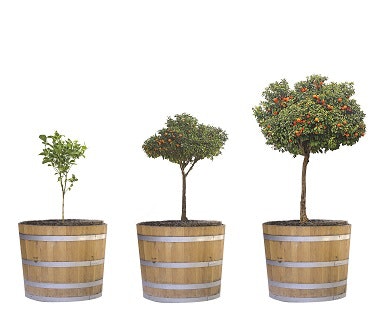
There are notable differences between cold-pressed lime oil produced from key versus Persian limes. One obvious difference is the fruit. Persian and key limes both taste like lime, but they also taste different from one another. The flavor of cold pressed Persian lime oil is lighter and less intense than the flavor of key lime oil cold pressed. Besides the differences in fruit variety, an important difference is in the production equipment used to extract the oil. Persian limes are processed using either rasping or FMC-style equipment designed specifically to keep the essential oil from coming in contact with the juice.
As with the production of orange juice, you do not want the essential oil present in the juice or the juice will be bitter. The essential oil of key lime, on the other hand, is often expressed directly into the juice. The expressed lime oil absorbs esters from the juice and is then separated from the juice using a centrifuge and a polisher. This is oil described as “Type A.” The juice, which still contains about 50% of the oil originally extracted, is then steam distilled. During distillation, the high level of citric acid reacts with the citral present in the lime oil, that, in the presence of steam, over a long period of time, creates high terpineol, oil of lime distilled. Lime oil from key limes can also be extracted using traditional rasping machines in which case it is called “Type B.” Not surprisingly, this oil is less juicy than Type A. Type B key lime oil is much appreciated by perfumers who use it in furo coumarin free form.
Lime distilled is a much larger volume product than lime expressed (old pressed). The use of the distilled product is primarily in carbonated soft drinks and its production is very much tied to demand.
There is meaningful lime distilled production in Peru, although small in comparison to Mexico. Thirty years ago there were many producers of lime distilled in Mexico. Today, there are far fewer. Most producers of lime distilled plan their manufacturing based on customer contracts and forecasts. There is usually not a big deficit nor a big surplus. While citrus greening disease has reduced production in the state of Colima in Mexico, a rebound has begun due to new plantings. In Michoacán State, where it is very, very hot, citrus greening is less prevalent. But, disruption to production due to potential civil unrest is always a possibility.
Over the past ten years, prices for lime distilled have increased markedly. This can be attributed to the need for farmers to receive compensation for the fruit they pick that keeps up with inflation and the higher costs of living in Mexico. It has also been due to increases in energy costs. Most of us assume that energy prices go up and go down following the world market. In Mexico, the petroleum industry is nationalized. The government uses its considerable domestic production for partial funding for the annual budget. Consequently, in Mexico, energy prices almost always go up. Another contributor to higher prices has been the significant depreciation in the value of the Mexican peso.
Brazil’s contribution to the total world production of orange juice is so important, anytime the crop is down by 30%, there is reason for concern.
In 2018, the processing industry should receive between 350,000 and 400,000 tons of fruit which will be 100,000 tons less than in 2016. This is due to disease and also to the increase in popularity of lime fruit in the US and Europe. For decades, a good rule of thumb was to assume that 80% of all key limes would be consumed as fresh and 20% processed into juice and oil. Today, the ratio is 90% and 10%. Increases in fresh fruit demand lead to increased planting. Since lime trees bear significant fruit after only a few years, the effects of new plantings will be seen over the next couple of years. A reasonable strategy for purchasing lime oil distilled and lime oil expressed is to plan ahead and contract in July for a 12-month supply. If your needs are not fully determined, consider contracting for half. This strategy hedges the upside while preserving the opportunity for downside insurance.
Orange
Oranges are by far and away the most popular citrus fruit. They are juicy, and sweet and consumed as fresh and as juice. Orange juice used to be a product that was always sold in concentrated form to which water was added. Today, many consumers throughout the world have access to NFC, or not from concentrate juice which tastes much closer to fresh-squeezed.
Volumes for orange are exceedingly larger than the volumes for all other citrus fruits. Brazil is the largest producer by a considerable margin. In the 2017 season, Brazil produced 512 million 40.8 kilo boxes. In 2018, the number fell to 393 million boxes. Though significantly lower, the number is still impressive. In 2018, Florida had the worst season since the 1940s with production falling from 69 million boxes in 2017, to 45 million boxes. This was due to Hurricane Irma, which severely damaged an already very small crop, the result of ten years of decimation due to citrus greening disease. In 2018, the total US production was only 91 million boxes including production from California and Texas, down from 120 million boxes in 2017.
Related: Citrus Taste Solutions in Times of Declining Availability
With the increase in domestic demand for fresh fruit in Brazil and the overall reduction in crop size, the amount of orange for processing into juice and oil will be reduced by approximately 30%. Brazil’s contribution to the total world production of orange juice is so important, anytime the crop is down by 30%, there is reason for concern.
The first forecast for 2019 production in Florida was issued on August 14, 2018, by the highly respected forecaster, Elizabeth Steger. Her projection was for 75 million boxes which, if comes to pass, will represent a stunning reversal and put the Florida crop back on the recovery path it was on prior to Hurricane Irma. Even though the US crop is smaller than it once was, in terms of processing, the US is still number two worldwide, although a very distant number two. In 2018, orange production in Brazil is estimated to be 11.1 million metric tons. The US is estimated at 2.07 million tons. Mexico is number three at 1.7 million tons followed by all of the EU countries with a total of 1.385 million tons. The next five countries, China, Costa Rica, South Africa, Argentina, Egypt, and Turkey, account for a total of 1.25 million tons. All the other world producers combined contributed a total of 0.15 million tons.
Oranges are processed for juice but there are other valuable by-products. These include orange peel (typically dried and used in cattle feed or as a starting material for manufacturing pectin), cold pressed orange oil, and d-limonene as well as other low-volume high-value by-products like orange essence oil. The market prices for orange oil and d-limonene are usually quite close, certainly within 10-20% with orange being the more expensive. From time to time, the ratios move out of sync. When that happens, it foretells either an increase in the price of the less expensive, or a decrease in the price of the more expensive. That is the situation we are in today where d-limonene prices are 30% lower than the price for cold pressed orange oil. Overall, with lower production and flat demand, there is a case to be made for price increases in orange. On the flip side, we have the unusual spread between the price of orange and the price of d-limonene. What’s left to consider? Inventory! The question is, is there enough orange oil in warehouses to enable large buyers to wait for lower prices?
Summing it Up
As you may have gathered, I think predicting prices is impossible in all but the most straightforward of situations. In the world of citrus, these easy to predict circumstances are few and far between. My suggestion to any company developing or refining a citrus buying strategy, is to hedge your purchases by diversifying your requirements by origin, and where appropriate, fruit type. In investing, there is a technique called dollar-cost averaging whereby you purchase the same dollar value of stocks at regular intervals so that you buy at both lower and higher prices. If the movement is generally in the upward direction, then by buying the dips, you reduce your risk while creating a positive return on investment. Although this is not possible when you are covering requirements for citrus oils, you can design a hybrid model that will work similarly. Dividing your requirements into manageable buckets and laddering contracts by buying fixed quantities at planned intervals probably makes the most sense when you find yourself in the position where the more information you collect, the more confused you become. Should you find yourself in these circumstances, take heart. Good judgement is often more important than collecting facts. Another consideration is inventory. As is the case with many natural products, consider carrying inventory of what you might consider as “strategic” levels. This will also create a hedge against the possibility of higher prices.
Regarding good judgement, Solomon, King David’s son, was given the opportunity by the Lord to ask for what he wanted. He did not ask for riches or long life but, rather, asked for an understanding heart to judge the people and discern good and evil. Collectively, citrus buyers may not need the power to judge good and evil but we certainly could use the power of discernment. For his humility, Solomon was rewarded for making this request by being granted great wisdom as well as riches and honor among men. After 35 years of participating in decisions to purchase every type of citrus oil, I see the value in Solomon’s request. If you are just getting started in your purchasing career, by all means, collect information and facts but also try to make the time to consider all possibilities before reaching a conclusion. And remember, there is nothing more satisfying than “buying right” and nothing more common than a citrus buyer with insomnia.


